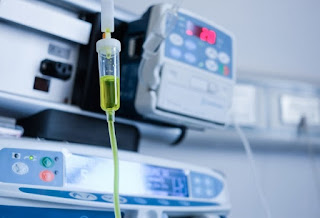To overcome the limitations of oral medication, Infusion Therapy is a good choice. The concept behind the working of Infusion Therapy is simple. Administering the medicine into the vein directly and securing it to have immediate effects on the body.
Types Of Infusion Therapy Set
An Infusion set should always address the needs of the
patient. According to a patient’s condition and safety, the choice is made.
Based on the treatment procedure, the Infusion Therapy Equipment is categorised
into two types.
●
Micro drip Set
A micro drip set delivers 60 drops/ml. It
is primarily used when a small amount of fluid is to be administered for a long
time. For example, pediatric or neonatal care.
●
Macro drip set
A macro drip set delivers 10, 15, or 20
drops/ml. It is primarily used to deliver large quantities of fluid in each
drop. Regular infusion treatments use macro drip sets.
On the basis of the type of fluid that is infused, an IV
set can be of two types. The first category transfers blood. And, the second is
for non-blood fluids such as saline.
Components of the basic Infusion
Therapy Equipment
The intravenous fluids are administered directly into our veins through the Primary Infusion Tubing Set. The administration consists of Sterile Spike, Drip Chamber, and other accessories that facilitate the infusion of the fluid into the patient’s vein.
The Infusion Therapy Equipment available vary with respect to the length of the tubing, and volume of the drip chamber. For example, the length of the secondary set tubing is less in comparison to the primary tubing. The number and size of drops can also be varied.
The various components of an Infusion Therapy Equipment
are mentioned below.
IV Bags
●
Flexible, Plastic, and Closed Container that stores
the IV fluid
●
Chances of contamination are less as air cannot
enter the closed bag
●
Portable and chances of rupture are reduced
●
To prevent the reaction of the medication with the
plastic, DEHP or di-2-Ethylhexyl-phthalate is not used in the bags
Sterile Spike
It connects the primary tubing to the IV bag. The medication
enters the vein either by the force of gravity or artificially through an
infusion pumping device.
Back Check Valve
It prevents the backward movement of the medication
towards the IV bag.
Access Ports
It is used to
provide secondary medications
Roller Clamp
It is used to regulate the speed of the flow of the fluid. It also helps to start or stop the flow of the fluid, in case of flow due to gravity.
An Infusion Therapy
Equipment is an integral part of the Infusion Therapy Treatment, commonly used
in medical care these days.

Comments
Post a Comment